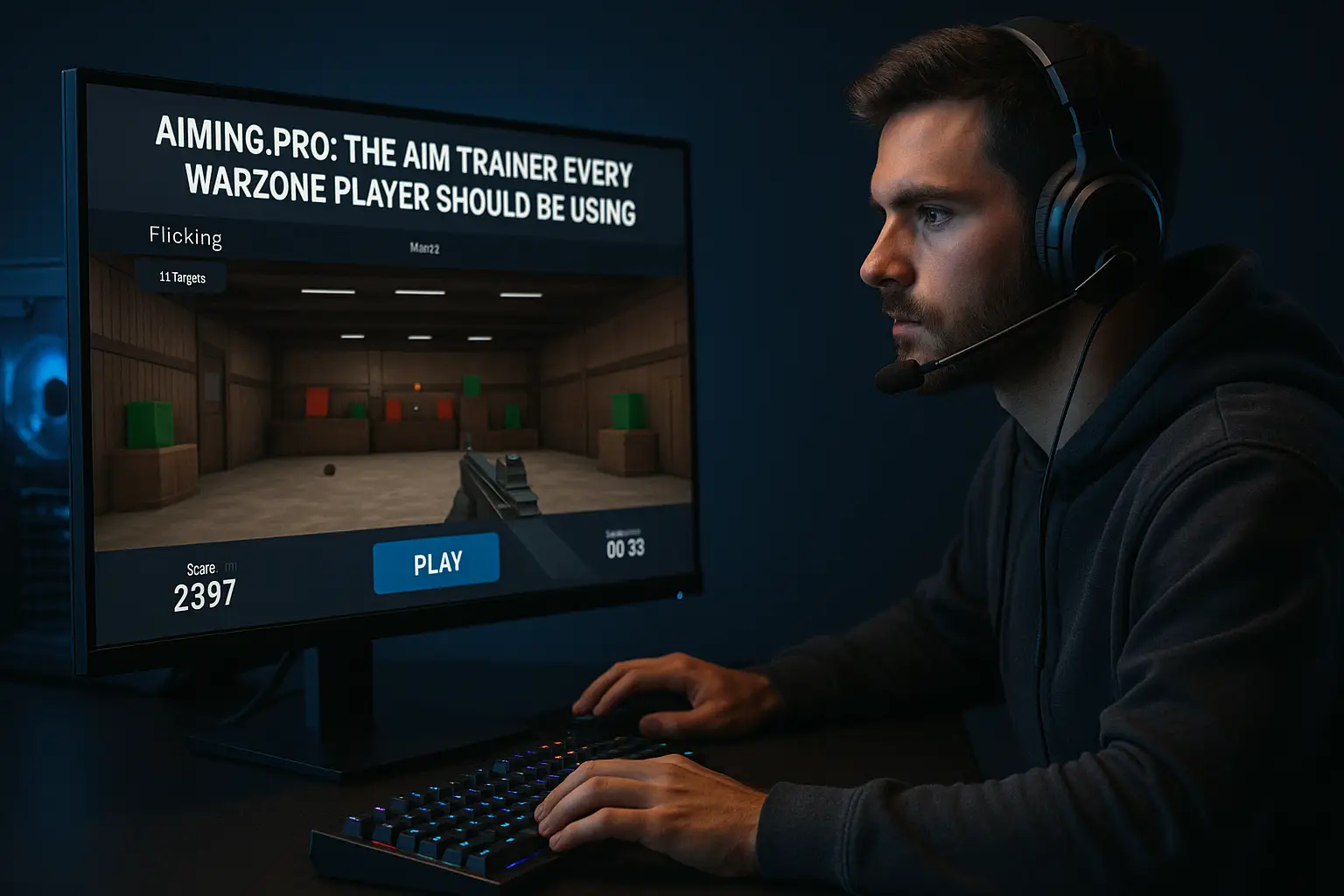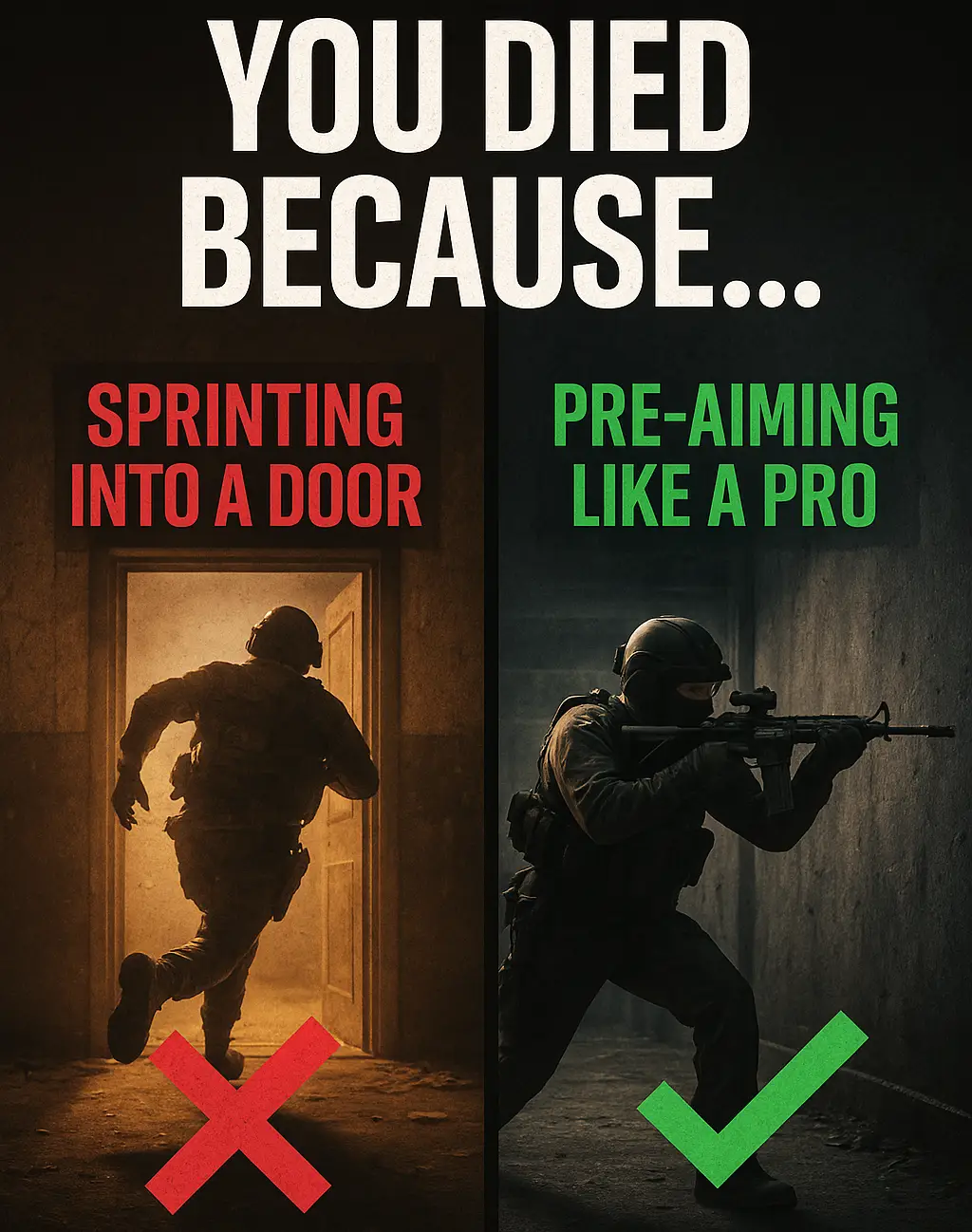
5 Tips to Master the Warzone COD Tactical Layout
Why Every Pro Player Uses the Tactical Layout in Warzone COD What Is the Tactical Layout and How Does It
I have spent many hours playing FPS games, and one thing has become clear—mastering weapon handling is key to long-term success. That’s why I put together this Beginner’s Guide to Weapon Handling in FPS Games, aimed at helping players develop steady control and confidence in every firefight. Learning the proper techniques can make a noticeable difference if you’re new to the genre or already have some experience. In this guide, I share the fundamentals and practical methods to help you gain the edge in battle.
Weapon handling in FPS games goes beyond merely shooting at targets. It involves understanding the various elements that affect your performance. You must become familiar with reloading, aiming, recoil management, and the different firing modes available. Establishing a good foundation in these areas helps set your learning in motion. A strong start builds confidence in more challenging game moments, and knowing a few basic terms early on is very important.
Spending extra time in practice sessions is beneficial to further build on these ideas. Slowly and steadily, experimenting with various weapon settings can give you a better feel for how the weapon behaves under pressure. This additional attention to detail ultimately helps solidify your skills over time.
When I first started playing, it took time to get comfortable with the controls and nuances of each weapon. A good starting point is to focus on easy-to-use weapons with balanced statistics. This simplicity lets you understand basic handling before moving on to more challenging gear. Many games offer training modes or tutorial sections where you can learn the fundamental controls without the pressure of competitive play.

Here are a few steps that I found helpful when I was beginning and which might help you as well:
Regular practice reinforces these concepts, making weapon handling more natural during real-match situations. Over time, you will notice improvements as your understanding of each weapon’s nuances becomes sharper.
Every beginner will encounter challenges that test their ability to manage in-game weapons. I have noticed that early mistakes often lead to fast and valuable learning if you approach them with a positive mindset. Below are some common aspects to consider as you work on your skills.
Recoil can affect every shot, especially in automatic weapons. The more you fire without pausing, the more difficult it becomes to maintain your aim. I recommend learning each weapon’s recoil pattern by practicing in controlled environments. Gradually, you will build the muscle memory necessary to counteract unwanted movement. Spending extra time analyzing how the weapon kicks and practicing corrective movements is a great way to get a feel for recoil control.
Several factors influence your shots’ accuracy, including your weapon’s assignment, aiming technique, and even your in-game settings. Taking the time to understand how these elements work together can significantly improve your overall performance. Often, beginners find that subtle adjustments in how they aim or shift their stance translate into noticeable improvements in accuracy.
Customizing your game settings can improve your weapon-handling skills. I have learned that modifications in sensitivity, crosshair design, and control layouts contribute to better overall weapon management. It is worthwhile to experiment with different settings until you find a natural and responsive configuration. A systematic approach to fine-tuning these settings can make a big difference during heated matches.
The specific mechanics of each game often dictate how you should approach weapon handling. For example, some games incorporate bullet drop and wind factors, whereas others emphasize fast-paced reflex actions. Familiarizing yourself early on with these mechanics helps prevent surprises when the game’s physics comes into play during intense combat. Spending extra time reviewing game tutorials and reading community guides can also provide insights that are very helpful in understanding these nuances.
Many players learn best by trial and error, and facing challenges head-on is part of the learning process. Each challenge you overcome is an opportunity to add to your knowledge and improve your in-game performance.
After mastering the basics, fine-tuning your skills with advanced techniques can boost your performance in FPS games. There are several insights I have picked up over time that can help you gain an edge over your opponents. Here are some additional methods to consider as you advance:
Train with Purpose: Regularly use game modes designed specifically for training. These modes often include challenges focused on precision, speed, and accuracy. Practicing a structured routine can help you continuously improve your weapon management skills.
Adjust Your Firing Rhythm: As you progress, learn to control the rhythm of your firing. This can involve holding your fire briefly to reduce the spread or using burst fire techniques in key situations. Such methods can save critical rounds during tight combat situations by reducing wasted ammunition and increasing accuracy.
Master Advanced Recoil Patterns: Many games have complex recoil patterns requiring a thorough understanding. Study your favorite weapons and practice by tracking the recoil pattern on static targets. With time and repetition, you can predict and counteract the recoil more effectively, giving you an advantage during multi-target engagements.
Adjust In-Game Settings: Fine-tuning elements like field of view, sensitivity, and brightness can help you achieve better control during matches. Minor adjustments and careful observation of their impact can result in a more precise and comfortable shooting experience. Experiment continuously until you discover the best settings that work for you.
Implementing these advanced techniques requires patience and consistent practice. There is no shortcut to perfecting your weapon handling, but with persistent effort, you will notice gradual yet significant improvements in your performance.
Beyond the core techniques, exploring additional methods to refine your skills is very important. One practical approach is to record and review your gameplay. Watching replays lets you pick up on mistakes you might have missed during live play. When you can rewatch your matches, you can analyze your positioning, reaction time, and overall control. This process helps you understand what you did right and highlights areas where you can improve.
Another great tip is to join community forums and discussion groups. Many experienced players generously share advice and practical drills that have worked wonders for them. Participating in these communities enables you to discover new strategies and uncover rare tactics that traditional guides might overlook. Sharing your progress with others and getting feedback can make learning more engaging and rewarding.
Additionally, consider setting up structured practice sessions where you focus solely on recoil control and aiming precision. Break down each practice session into segments that tackle specific skills. For instance, start with simple target drills for aiming before moving on to more advanced recoil control exercises. Over time, mixing these dedicated drills with regular gameplay helps cement the habits leading to better performance in high-stress scenarios.
It is also worthwhile to experiment with different types of weapons during practice sessions. Even if you plan to specialize in one or two types, trying out a variety of weapons can expose you to different handling challenges and force you to adjust your techniques. This broadens your skill set and makes you more adaptable when unexpected situations arise during matches. Switching between various weapons encourages you to think on your feet and adjust quickly to new recoil patterns and firing modes.
A balanced loadout is key when you are just setting out. Given the wide variety of weapons available in FPS games, beginning with a few core types that can handle most situations makes sense. In my experience, sticking with several fundamental weapon categories allows for a smoother transition as you grow more adept.
Consider starting with weapons with moderate recoil, versatile firing modes, and reliable accuracy. Classic choices include:
Many players also experiment with sniper rifles and shotguns; however, these typically demand high accuracy or extremely fast reflexes. By focusing on a basic loadout initially, you give yourself the chance to build and refine your skills at a comfortable pace. Once you become proficient with these weapons, adding more specialized tools to your arsenal becomes a natural next step.
Below are some of the common questions I encountered when I was first learning how to handle weapons in FPS games, along with the answers based on my experiences:
Question: What is the most important aspect of weapon handling in FPS games?
Answer: A solid grasp of recoil control and proper aiming technique is vital. Understanding your weapon’s behavior during combat helps you land shots consistently.
Question: How can I improve my recoil control?
Answer: Regular practice in training modes and dedicated sessions focusing on specific weapons can boost your skills. Over time, you notice the recoil pattern and develop a method to counteract it effectively.
Question: Should I customize my game settings and controls?
Answer: Adjusting sensitivity, key bindings, and crosshair appearance can improve the handling experience. It is worthwhile to tweak these settings until they feel right.
Question: Is it essential to switch weapons often during matches?
Answer: While understanding each weapon well is essential, consistency with a few core weapons usually produces better results. Once comfortable, you can experiment with switching weapons depending on the situation.
Improving weapon handling in FPS games starts with understanding the basics and then building on them with focused practice. The techniques discussed throughout this guide—such as mastering recoil, sharpening your aiming, and adjusting your game settings—are all part of a continual learning process that requires time and dedication.
Investing time in structured training and setting up a balanced loadout has helped me improve my performance significantly over time. With persistence and regular practice, the skills you build will translate into stronger competitive performance and more satisfying gameplay moments.
Remember, practice is key. The more you learn about your weapons and how they behave in different situations, the smoother your control will become during high-pressure encounters. Take the time to review your gameplay, seek advice from more experienced players, and continuously set new challenges for yourself. The bottom line is that getting better is a gradual process, so be patient and enjoy every step of your improvement.
This blog is meant to be a stepping stone towards mastering FPS combat. Whether replaying old drills or working on new techniques, every little focus helps you further sharpen your skills. Keep exploring new methods, testing different strategies, and, most importantly, have fun while you level up your game.
Thanks for reading my blog post on Beginner’s Guide To Weapon Handling: FPS Games. If you liked this blog, you should also read my other blog, How To Deal With Toxic Players In FPS Games.
Ask Questions: If you have any questions, leave them in the comments below.
Happy Gaming!

Why Every Pro Player Uses the Tactical Layout in Warzone COD What Is the Tactical Layout and How Does It

Best Aim Trainer for Warzone (Aiming.pro): Why Every Player Should Be Using It If you’re looking for the Best Aim

Warzone Sprint-to-Fire Delay Explained (Top 5 Secrets to Win More Fights in 2025) Field Brief: Understanding Warzone Sprint-to-Fire Delay “The